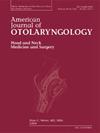Controversies in thyroid and parathyroid surgery
IF 1.7
4区 医学
Q2 OTORHINOLARYNGOLOGY
引用次数: 0
Abstract
Background/purpose
Clinicians involved in thyroid and parathyroid surgical care can harbor strongly held beliefs meant to achieve the best outcomes, sometimes based on erroneous or outdated evidence. This article will clarify some common practices that can be refuted by critical analysis of the literature.
Methods
Observations in clinical practice of the most strongly communicated practice patterns were compared to review of published literature. Those practice patterns most discordant with evidence were included in the list of myths.
Results
Eligible clinical practices were organized by source: Surgeon, Anesthesiologist, Endocrinologist, and Institution. Examples of practices that can be disputed by evidence included the avoidance of muscle relaxants during recurrent nerve monitoring, awake fiberoptic airway management during induction for large or retrosternal goiter surgery, avoidance of contrast for CT imaging, and utilization of neural monitor technicians during surgery. Overall, 10 practice patterns that are discordant with published evidence were identified as appropriate for myth-busting.
Discussion
All clinicians caring for thyroid and parathyroid surgery patients share a desire for highest quality outcomes, especially since the patient may have many years to live with the consequences of complications. It is understandable that practice patterns can be strongly adhered to even if evidence suggests alternatives. This project identified some of the more controversial or heterogeneously applied practice patterns.
Conclusions
Identification of 10 practice patterns that can be altered based on high quality evidence may provide an opportunity for clinicians to reflectively modify what they do, possibly resulting in better, less complex, or more precise clinical care.
甲状腺和甲状旁腺手术的争议
背景/目的参与甲状腺和甲状旁腺手术护理的临床医生可能怀有旨在获得最佳结果的强烈信念,有时基于错误或过时的证据。本文将澄清一些常见的做法,这些做法可以通过文献的批判性分析来反驳。方法将临床观察结果与已发表的文献进行比较。那些与证据最不一致的练习模式被列入神话清单。结果符合条件的临床实践按来源分列:外科医生、麻醉师、内分泌师和机构。有证据表明,在反复神经监测中避免使用肌肉松弛剂,在诱导大甲状腺肿或胸骨后甲状腺肿手术中避免使用清醒的纤维气道管理,避免使用CT造影剂,以及在手术中使用神经监测技术人员。总的来说,与已发表的证据不一致的10种练习模式被确定为适合打破神话。所有治疗甲状腺和甲状旁腺手术患者的临床医生都希望获得最高质量的结果,特别是因为患者可能要忍受并发症的后果多年。可以理解的是,即使有证据表明有其他选择,也可以强烈地坚持练习模式。这个项目确定了一些更有争议的或异质应用的实践模式。结论:根据高质量的证据,确定10种可以改变的实践模式,可能为临床医生提供一个反思修改他们所做的事情的机会,可能导致更好、更简单或更精确的临床护理。
本文章由计算机程序翻译,如有差异,请以英文原文为准。
求助全文
约1分钟内获得全文
求助全文
来源期刊

American Journal of Otolaryngology
医学-耳鼻喉科学
CiteScore
4.40
自引率
4.00%
发文量
378
审稿时长
41 days
期刊介绍:
Be fully informed about developments in otology, neurotology, audiology, rhinology, allergy, laryngology, speech science, bronchoesophagology, facial plastic surgery, and head and neck surgery. Featured sections include original contributions, grand rounds, current reviews, case reports and socioeconomics.
 求助内容:
求助内容: 应助结果提醒方式:
应助结果提醒方式:


